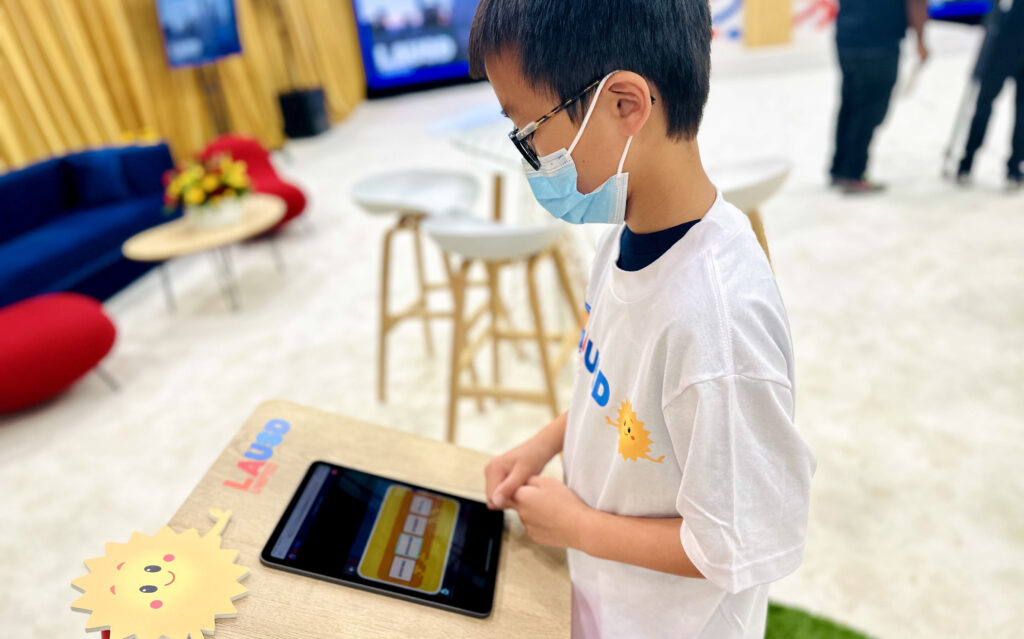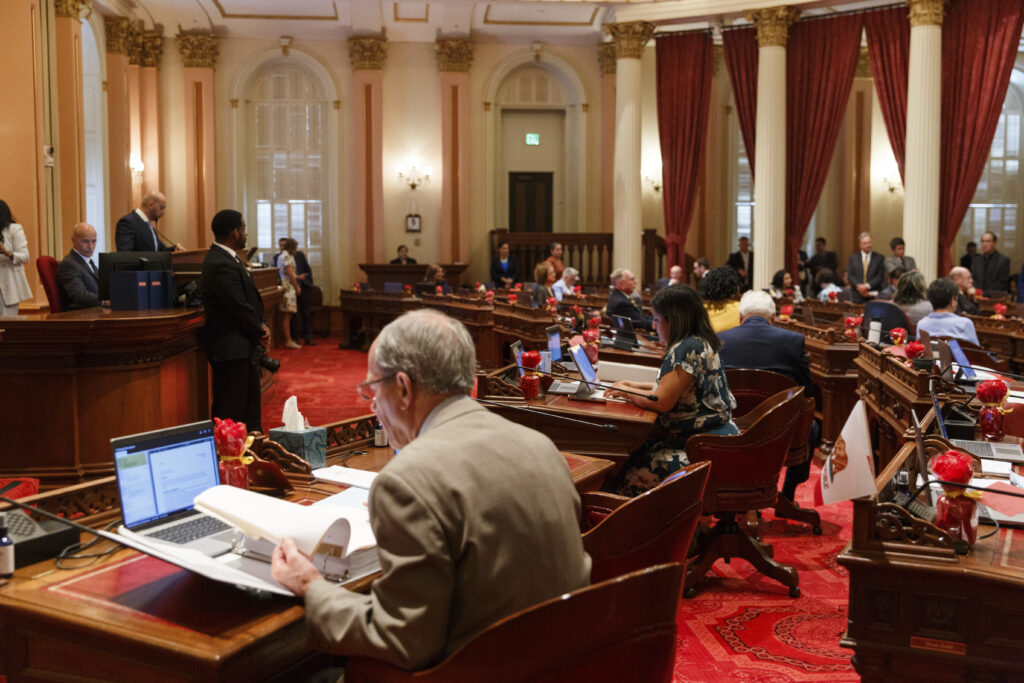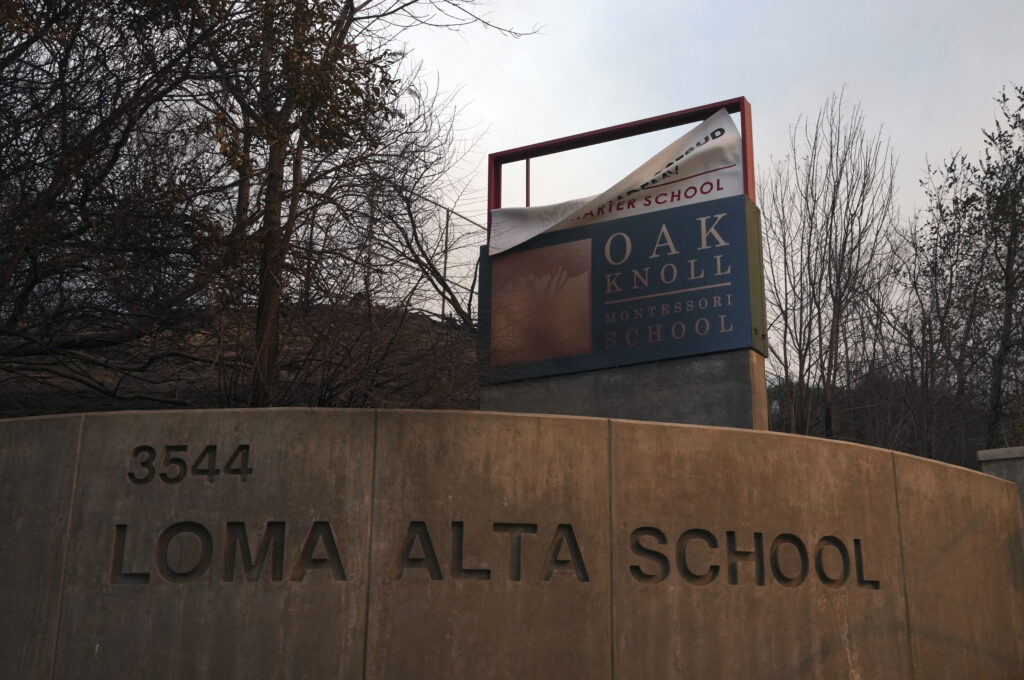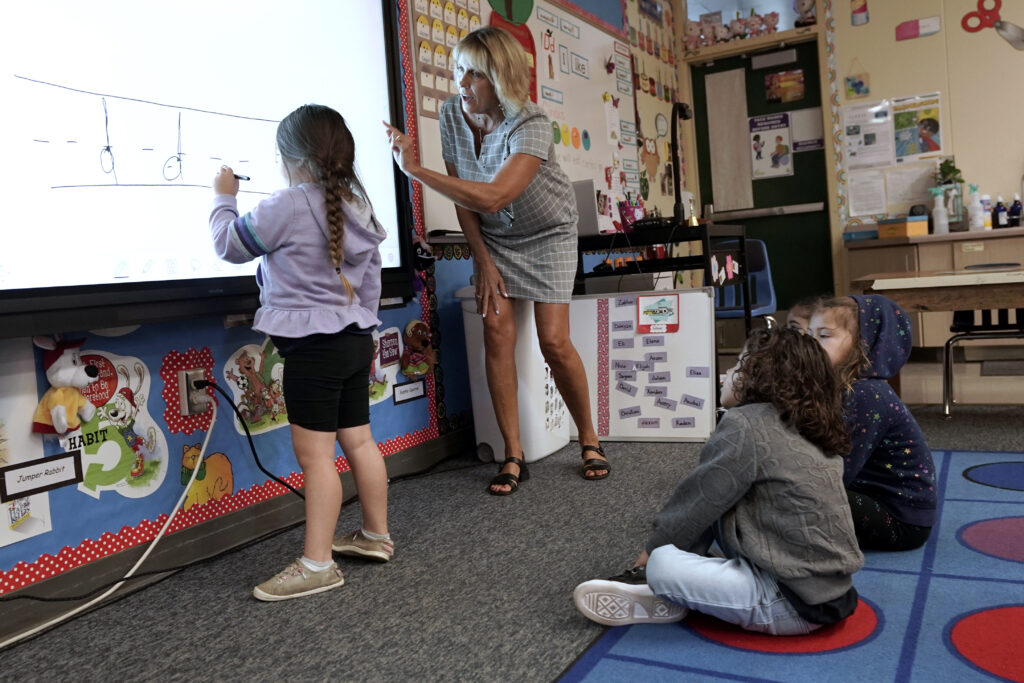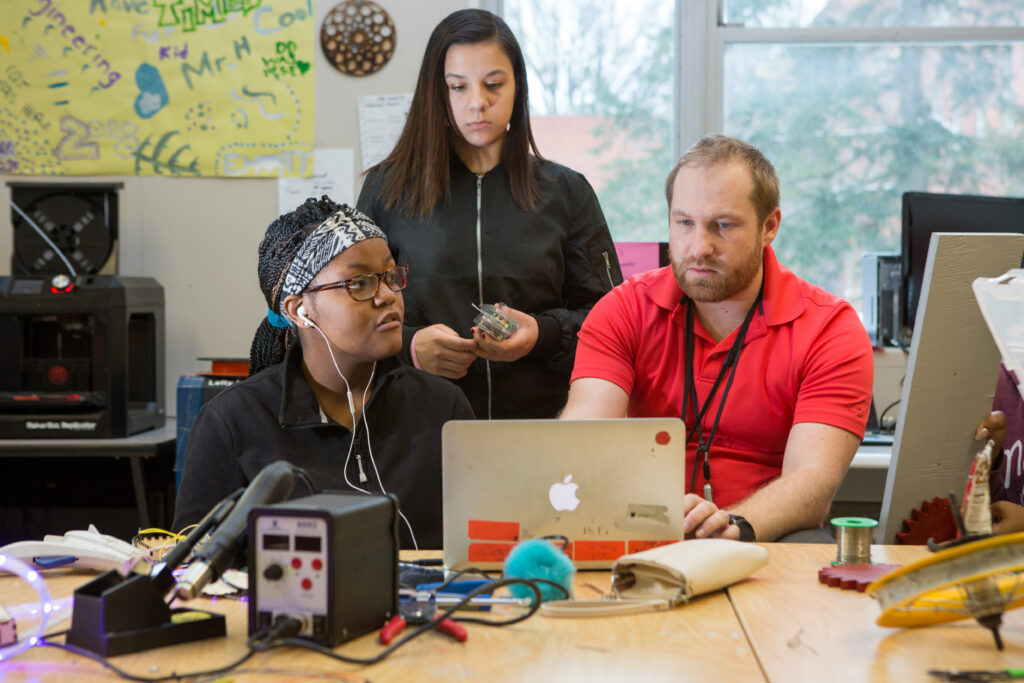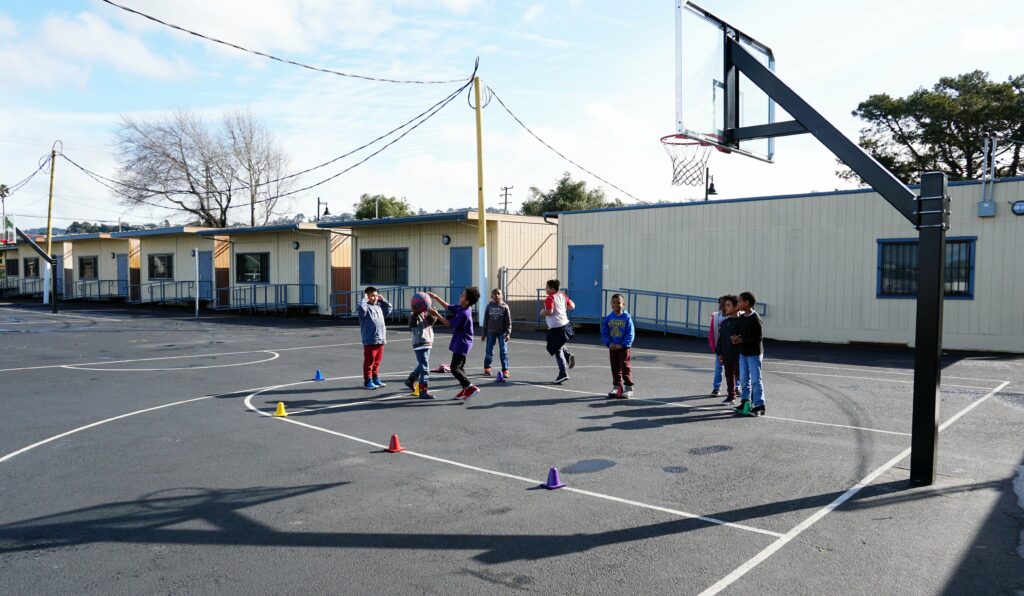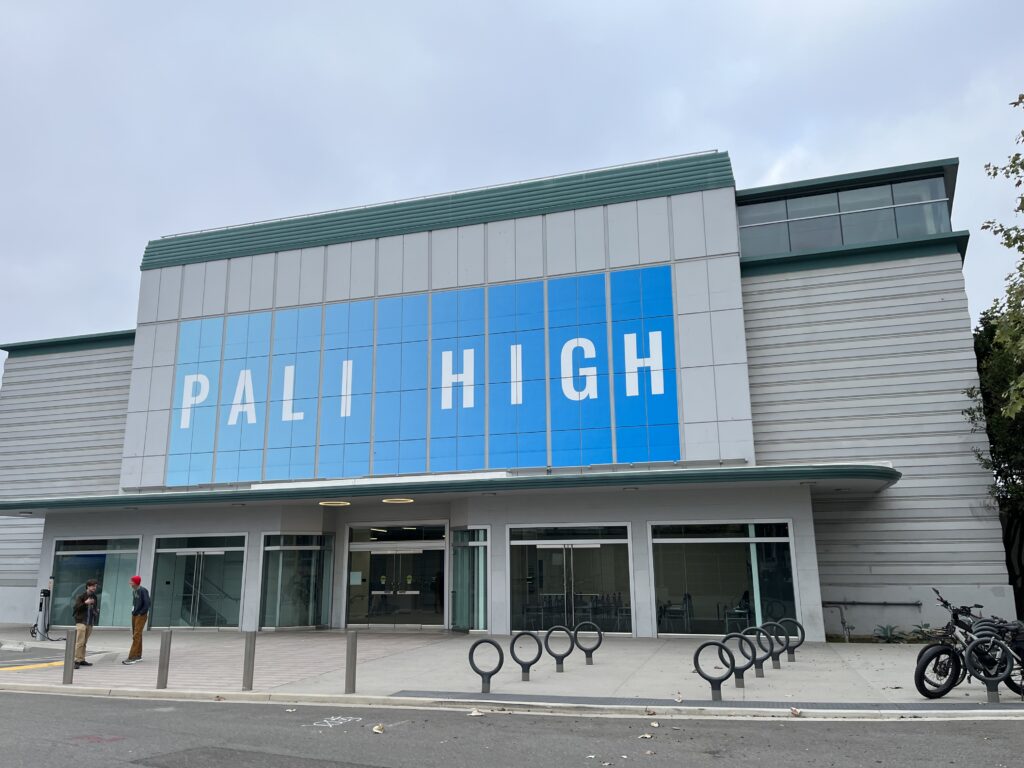
An LAUSD student tries out Ed, the district’s new AI assistant for students.
Credit: Los Angeles Unified / X
Roughly a month after the Los Angeles Unified School District revoked its AI chatbot, Ed, communities of parents, teachers and experts are demanding that the school district respond to their concern that the short-lived association with AllHere, the company that built and supported the program, has potentially compromised data on the district’s larger educational priorities.
“While we welcome technological advancements, it’s crucial to engage in transparent discussions with educators, educational staff, parents, and policymakers about the risks and impacts of AI in schools,” said Cecily Myart-Cruz, president of United Teachers Los Angeles (UTLA), in a statement.
UTLA also encouraged the district to engage outside counsel and move forward with an investigation. Myart-Cruz also emphasized in the statement that any AI tools moving forward are part of collective bargaining.
School board member Rocío Rivas said in a July 31 Facebook post that the district has “initiated investigations” to look into allegations of compromised data.
A spokesperson for LAUSD said on July 15 that regardless of what happens to AllHere, student data will be protected by security measures that forbid the company from storing student data outside the U.S., unless the district grants the company permission to do so.
The lead-up
In March, LAUSD rolled out the red carpet to introduce Ed, a smiling sun chatbot designed to serve as a personal assistant for students — capable of connecting them to mental health resources, informing them of cafeteria menus and waking them up in the morning.
The district has repeatedly justified its decision to use AllHere.
“Los Angeles Unified launched a rigorous and competitive RFP (request for proposal) process and adhered to the District’s procurement process,” a district spokesperson told EdSource. “What we intended to develop did not readily exist as an off-the-shelf product, and we needed to build this from the ground up.”
The district considered three entities — AllHere, Afirma and Kokomo 24/7, which LAUSD collaborated with to provide telehealth services — and paid AllHere roughly $3 million for the product.
Carvalho said the bot was also designed to nudge students who are falling behind and allow them to click on resources for help. He also reassured the March event’s attendees that agencies at various levels — local, state and national — would help monitor any cybersecurity concerns.
At the time, he acknowledged that Ed might endure some challenges but that the district was committed to its success.
“Just like humans are not perfect — although sometimes, in certain political circles, some say they are — the technology produced by humans isn’t perfect either,” Carvalho said at the March event.
“With all of the protections against the vulnerabilities, there is always a concern. That’s why we are over vigilant,” he said.
Ed was supposed to be rolled out in phases — beginning with the district’s 100 priority schools.
Three months later, on June 14, alarms began to sound, and AllHere had furloughed the bulk of its staff due to financial challenges, The 74 reported. Meanwhile, the CEO left.
In response — and because AllHere staff were unable to supervise it — the district removed the chatbot feature. LAUSD, however, still owns Ed, the district spokesperson confirmed, and the resource is still largely available to families.
The LAUSD spokesperson said Ed’s chatbot will return to families when the “human-in-the-loop aspect is re-established.”
“Los Angeles Unified was surprised by the financial disruption to AllHere. We were not made aware of any red flags concerning the organization, its solvency, or any financial issues,” the district spokesperson said.
“We had every confidence in their ability to develop a solid product. We, like other districts, were notified of their financial collapse and immediately ceased payment for a pending invoice.”
The spokesperson also said that the district has not found a connection between what happened at AllHere and a data breach known as the Snowflake incident, adding that AllHere “does not maintain data on Snowflake.”
Concerns over potentially compromised data have remained in the LAUSD community since, leading the district to begin investigating.
The pushback
While Los Angeles Unified remains committed to Ed, community members and experts at the University of Southern California (USC) Rossier School of Education continue to express their concern about student safety and the district’s priorities.
“All we want are smaller class sizes and happy teachers. Basic stuff,” said Joanna Belson, the parent of a senior at North Hollywood High School, whose sister teaches in the district. “We don’t want Ed. We don’t want AI.”
She added that the district should instead spend its money on expanding music and arts education — and extending sports programs to middle schools.
Echoing Belson, Alicia Baltazar, another LAUSD parent, voiced concerns about any potential data compromise, saying the district’s newfound emphasis on AI contradicts its new decision to ban cellphones in school. She added that the district should instead spend the money on bolstering its staff.
“I don’t know … how I’m going to tell my kid: ‘Stay off your cellphone. Don’t touch that at all. But here, use your laptop all day long. Use your chatbot,’” she said.
For Yasemin Copur-Gencturk, a professor at USC, the concerns lie in the technology itself.
Copur-Gencturk said there’s no evidence that the tool can accomplish what the district said it can do: promote academic recovery.
“AI has incredible potential to transform education and improve educational outcomes. There is no doubt about that. But there is a big ‘if,’” Copur-Gencturk said. “And I think many are ignoring that part. Most of the AI-based tools are not designed based on what we have learned from research on teaching and learning.”
She said, for example, that AI tends to take each learning goal separately, without considering how concepts build on or connect to one another. This is particularly common in subjects like mathematics and could negatively impact students’ learning experience.
School districts, she said, should not spend large sums of money on AI unless they are certain the necessary security measures are in place and will have the positive academic impact they are seeking.
“There’s a notion that as long as artificial intelligence is involved, or a newer technology is involved, it will solve the problems,” Copur-Gencturk said. “Unfortunately, life is not that simple. We really need to, as educators, as administrators, we really need to be more cautious.”
Beyond Los Angeles Unified
While LAUSD has struggled with its rollout of Ed, districts across the nation that are contemplating incorporating AI could feel the effects, said Robin Lake, the director of the nonprofit Center for Reinventing Public Education.
“We never want to see things like that happen, and it’s obviously a setback for LAUSD in their goals for that tool,” Lake said. “But it’s also potentially a setback for other districts around the country who might look to LAUSD and think, ‘Oh, no, I don’t want to take any risks at all around AI, because I don’t want to end up in the newspaper.’”
She also said LAUSD’s story could serve as a reminder for other districts to roll out any AI features more slowly and more carefully, especially amid a “gold rush of providers” and a desire to remain ahead of the curve.
Lake also emphasized the importance of the education communities coming together to communicate their needs to education technology companies — and stressed the need for state and federal governments to provide better guidance to help ensure AI is woven into education equitably.
Despite the challenges, however, Lake maintained that AI has incredible potential to transform education — and that a “couple blowups” experienced by one district should not deter others from pursuing AI tools.
“Could AI help transform the teaching profession? Could AI help address student mental health crises? Could AI help improve assessments in education?” Lake said.
“There’s so many, so many possibilities. There’s still big questions around all of them, but as times get tighter around money, as federal funding goes away, we really must look to all potential solutions, and AI should be one of those.”
